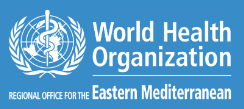Clinical audit of severe preeclampsia & eclampsia management at obstetrics and gynecology department, unit -1 Lahore General Hospital
DOI:
https://doi.org/10.61171/v01.04.47Keywords:
Clinical audit , Eclampsia, Pre-eclampsia, Hypertension , Management, Quality of careAbstract
Background: In spite of the advancements in the management of preeclampsia/eclampsia in the past two decades, it is still a major cause of maternal and fetal complications, particularly in developing countries like Pakistan.
Objective: To retrospectively assess the quality of the healthcare being provided to pre-eclampsia and eclampsia patients in obstetrics and gynecology department of Lahore General Hospital.
Methodology: This retrospective observational study was done at Obstetrics and gynecology department of Lahore General Hospital, Lahore. The study was completed in 2 months. A total of 30 consecutive pregnant patients having systolic blood pressure ≥160 mmHg and diastolic blood pressure ≥110 mmHg on two different reading four hours apart, proteinuria ≥ 2+ on a urine dipstick and/or eclamptic seizures were included in the study. Cases and management practices were assessed using clinical audit for the level and quality of care.
Results: Mean age of the patients was 31.21±3.62 years. 11(36.67%) patients were of less than 30 years of age whereas 19(63.33%) were of 30 or more than 30 years of age. 22(73.33%) were primigravida and mean gestational age was 33.61±4.28 weeks. Fits developed in 20(66.67%) patients in the antenatal period, 1(3.33%) patient during delivery and 9(30.0%) patients after delivery. 24(80.0%) were managed in high dependency unit of the hospital whereas 6(20.0%) patients needed intensive care. Admission to delivery time of less than 12 hours was reported in 25(83.0%) patients whereas it was ≥12 hours in 5(17.0%) patients. Magnesium Sulphate was given in 29(96.0%) patients. Steroid shots were given in 21(70.0%) patients for fetal lung maturity. All 30(100%) patients were given antihypertensive medications.
Conclusion: Clinical audit is a beneficial tool for assessing and improving the level and quality of care, in comparison to the documented international guidelines. The process is easy and inexpensive and majorly provides cheap solutions. In our audit, suboptimal care was reported. In order to avoid maternal mortalities, level of the care should be improved based on the findings of the current audit.
Downloads
Downloads
Published
Issue
Section
License
Copyright (c) 2023 Pioneer Journal of Biostatistics and Medical Research

This work is licensed under a Creative Commons Attribution 4.0 International License.












